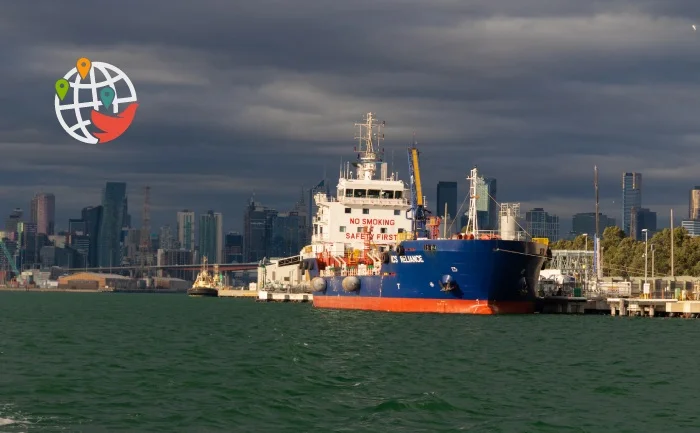The St. Lawrence Seaway strike has slowed down the entire Canadian economy

Workers face pressure, but they don't give up.
Beginning Sunday, Oct. 22, the strike by 360 workers at the St. Lawrence Seaway Corp. continues. The St. Lawrence Seaway, a shipping route that links the Atlantic Ocean to the Great Lakes through a system of 15 locks between Lake Erie and Montreal, remains closed.
Why is this sea route important?
The complete Great Lakes St. Lawrence Seaway system serves more than 100 ports and commercial docks. It is through it that the export of goods from the Prairie provinces (Manitoba, Saskatchewan, and Alberta) and the Midwestern United States is streamlined. Major cargoes en route include grain, iron ore, petroleum products, stone and coal.
The Canadian Chamber of Commerce and the Canadian Federation of Independent Business have called on the federal government to intervene in the strike to avoid supply chain disruptions. The Chamber of Commerce reminds that the functioning seaway provides jobs for 66,000 Canadians.
Business representatives in turn point out that Canadians are already dealing with inflationary pressures that have been caused in part by supply chain problems. So far, the strike has led to the stoppage of about a hundred ships.
Why are the workers on strike?
Unifor, the union representing the protesters, says they are fighting for higher wages. They argue that current wages are not keeping pace with the rising cost of living in Canada.
Unifor Quebec director Daniel Cloutier said the employer does not value the specific skills of the workforce and the health and safety risks to workers.
Notice of the strike was given 72 hours in advance on October 18. During that time, the union still hoped to reach agreements, but St. Lawrence Seaway Management Corp. took no action until 11:59 p.m. Oct. 21, so the workers went on strike.
What is the answer at St. Lawrence Seaway Management Corp.?
The company says it is willing to meet the demands, and blames the strike on the union. According to SLSMC management, Unifor is simply inspired by the recent success in negotiations with the automobile industry giants — and is trying to apply this experience to the situation with the sea route.
The key difference between the industries in SLSMC's view is the regular increase in average wages. Growth for maritime transportation workers over the past 20 years has exceeded inflation and is approaching 10%. The company also says it is working to reach an agreement that balances wage demands and market realities.
What position does the state take?
Federal officials are closely monitoring the situation. Unlike the Chamber of Commerce representatives, Minister of Labour Seamus O'Regan categorically refuses to intervene in the negotiations, recognizing the right of workers and employers to resolve their conflict independently:
"We just keep talking to our American counterparts. They're obviously very concerned and have a lot at stake," he commented.
However, not all officials agree with the minister. The premiers of Ontario and Quebec, Doug Ford and Francois Legault, issued a joint statement in which they hinted opaquely at which side the provincial governments were on:
"The labour disruption that has closed the St. Lawrence Seaway is risking significant harm to our economies. Nearly CA$ 17 billion in goods were transported through this vital trade corridor last year alone. Businesses and people across the country will soon be feeling the broader impacts if this disruption continues."
Provincial leaders also recalled the B.C. port strike earlier in the year and that something like that should not happen again.
With the assistance of government officials, another negotiation between the union and the employer will take place this Friday, October 27 in Toronto.





























